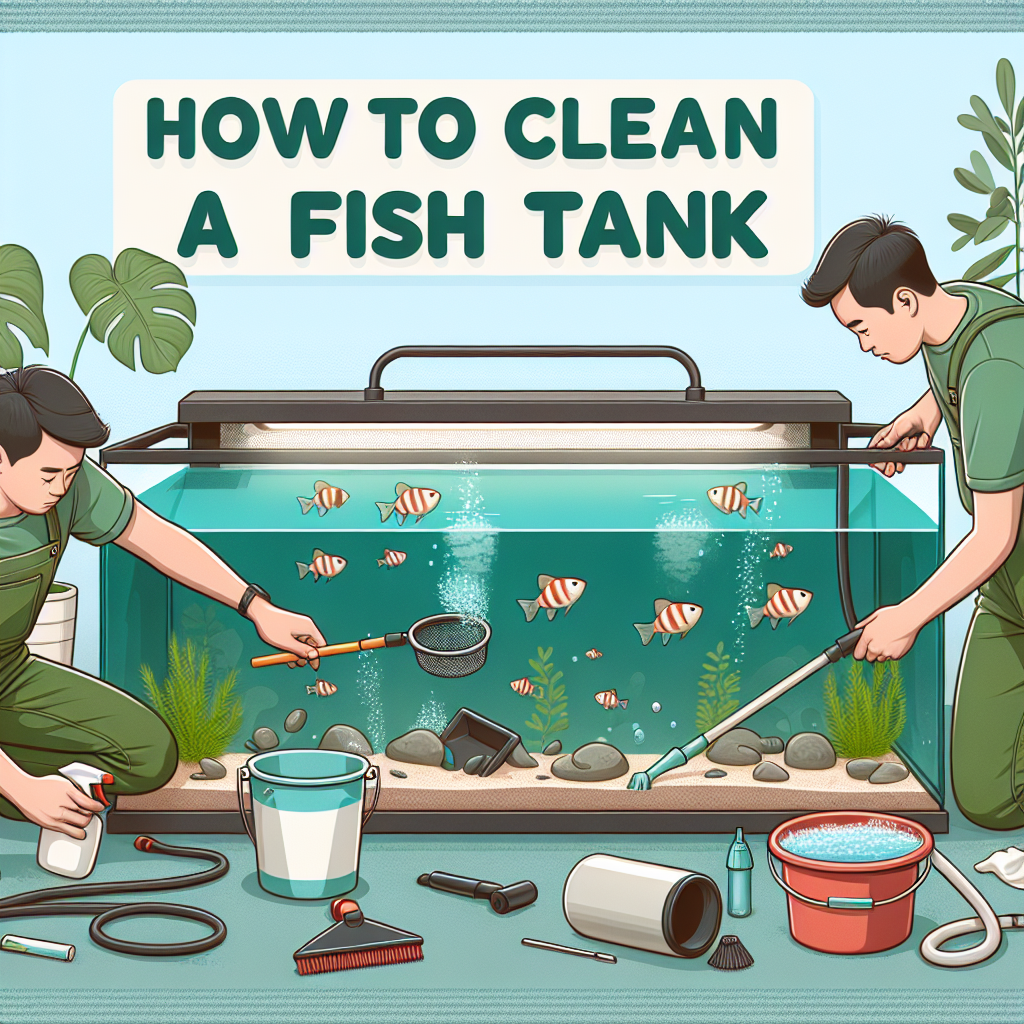Keeping a fish tank clean is essential for the health and well-being of your aquatic pets. A clean tank not only ensures a beautiful display but also helps maintain a stable environment for your fish. This article will guide you through the process of cleaning your fish tank effectively and safely.
Why Regular Cleaning is Important
Before diving into the cleaning process, let’s explore why regular maintenance is vital:
-
Water Quality: Clean water is crucial for fish health. Debris and waste can accumulate, leading to ammonia and nitrate spikes, which can be harmful or even deadly to fish.
-
Algae Control: Regular cleaning helps control algae growth that can cloud the water and inhibit the natural beauty of your tank.
- Overall Aesthetics: A clean tank not only looks better but also enhances the overall enjoyment of your aquarium hobby.
What You’ll Need
- Algae scraper or sponge
- Gravel vacuum or siphon
- Bucket (preferably dedicated for tank use)
- Clean, dechlorinated water (same temperature as tank water)
- Water conditioner (if needed)
- Fish net (optional)
- Towels for spills
Step-by-Step Cleaning Process
1. Prepare Your Materials
Before beginning, gather all your cleaning supplies. Ensure your algae scraper and sponge are safe for aquatic use, and have a bucket ready for removing old water.
2. Turn Off Equipment
Turn off any devices like filters, heaters, and lights. This helps prevent damage and minimizes stress for your fish.
3. Remove Decorations and Plants (Optional)
If you want a more thorough cleaning, consider removing small decorations or plants. Rinse them in dechlorinated water to remove algae and debris. Avoid using soap or harsh chemicals.
4. Use the Gravel Vacuum
Using a gravel vacuum or siphon, remove about 20-30% of the water from your tank. Vacuum the substrate thoroughly to remove uneaten food, fish waste, and other debris. Start by pushing the siphon into the gravel to lift the waste, allowing it to flow into the bucket.
5. Clean the Glass
Use the algae scraper or sponge to clean the inside of the glass. Be gentle to avoid scratching the glass and use an appropriate tool for your type of tank (e.g., acrylic tanks require special care). If you have stubborn algae, you may need to let the scraper soak or use a dedicated algae removal product.
6. Rinse Filters (If Necessary)
If your filter is dirty and warrants cleaning, rinse the filter media in a bucket of water taken from the tank. This step helps preserve beneficial bacteria vital for a healthy tank environment. Avoid using tap water, as it can kill your beneficial bacteria due to chlorine.
7. Refill the Tank
Once you’ve cleaned the tank, it’s time to refill it with fresh water. Prepare the water first to match the temperature and pH of the existing tank water to avoid shocking your fish. Add a water conditioner if necessary.
8. Restart Equipment
After refilling your tank, turn your filter and heater back on, and check that everything is functioning properly.
9. Monitor the Fish
Lastly, closely monitor your fish for the next few hours after cleaning. Watch for any signs of stress or abnormal behavior. It’s natural for them to be a bit more active post-cleaning, but any signs of distress should be addressed immediately.
Tips for Maintenance
-
Regular Schedule: Clean the tank at least once every 1-2 weeks, depending on the size of the tank and the number and type of fish.
-
Test Water Parameters: Regularly check the ammonia, nitrite, nitrate, and pH levels of your tank water to ensure it remains safe for your fish.
-
Balanced Bioload: Avoid overcrowding your tank; a well-balanced bioload will make maintenance easier and keep your fish healthier.
- Watch Feeding Habits: Feed your fish appropriate portions to minimize waste production. Overfeeding is a common cause of water quality issues.
Conclusion
Cleaning your fish tank may seem like a daunting task, but with the right approach and materials, it can be a straightforward process that greatly benefits your aquatic friends. Adopting a regular cleaning routine will not only improve your aquarium’s appearance but also contribute to a thriving aquatic ecosystem. Happy fishkeeping!





